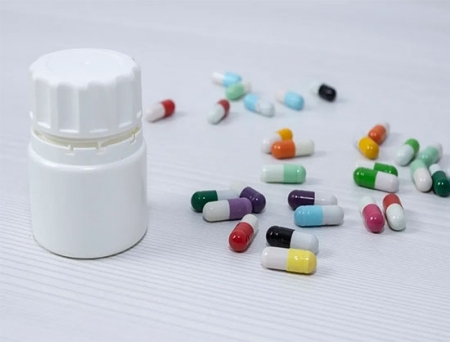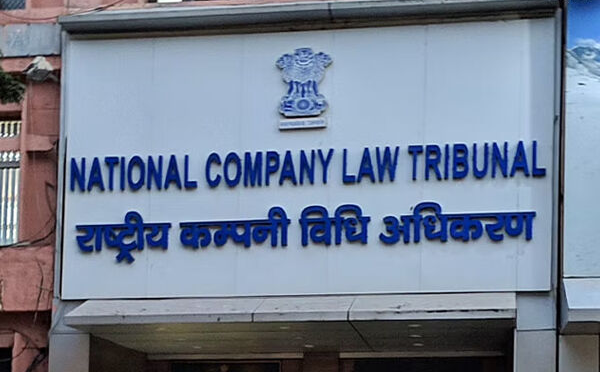预约演示
更新于:2025-08-11

RA Chem Pharma Ltd.
更新于:2025-08-11
概览
关联
100 项与 RA Chem Pharma Ltd. 相关的临床结果
登录后查看更多信息
0 项与 RA Chem Pharma Ltd. 相关的专利(医药)
登录后查看更多信息
31
项与 RA Chem Pharma Ltd. 相关的文献(医药)2025-03-04·Analytical Chemistry Letters
Development and validation for the quantification of genotoxic impurities in Bempedoic acid drug by GC/MS
作者: Patel, Haresh B. ; Vadariya, Sandip ; Patel, Trushar ; Dave, Rohit H. ; Hirpara, Hitin
The assessment of potential genotoxic impurities in drug substances was treated as important as well as very challenging issue in the pharmaceutical world.As per European Medicines Agency (EMA), permissible daily exposer of potential genotoxic impurity given as acceptable limit 1.5 μg/day for the pharmaceutical products.In view of this, Bempedoic acid drug substances have been evaluated for the quantification of two genotoxic impurities like, Ethyl-7-bromo-2,2-dimethylheptanoate & 1,5-Dibromopentane, which are having structure alerts.The Gas chromatog.-mass spectrometry (GCMS) was used for the determination of these impurities; The RTX-624 GC column used for better separation and selected ion monitoring (SIM) mode has been used to get the proper detection of both the impurities.GCMS method was validated as per ICH Q2 (R2) guidelines.The specific detection range of both impurities observed between 2.5-12.5 ppm, linearity observed with the exceed 0.990 correlation coefficient and found accuracy in terms of recovery between 82.0%-95.0% with the below 5.0% relative standard deviation of both the impurities.This technique has been successfully directed for determination at ppm level of both the impurities in Bempedoic Drug substances.
2022-11-02·Analytical Chemistry Letters
Enantioselective Green HPLC Method for Simultaneous Determination of Enantiomer, and Potential Impurities in Apremilast Drug Substance
作者: Aparna, Pasula ; Marisetti, Vishnu Murthy ; Vijaykumar, Cholleti ; Kumar, Yalavarti Ravindra
A single reversed-phase HPLC method was developed for the quantification of seven impurities of Apremilast and its enantiomer in the drug substance.An immobilized chiral stationary phase with a chiral selector "tris (3,5-di-Me Ph carbamate) derivative of amylose-Chiralpak IA-3 (250 mm x 4.6 mm, 3μm) was employed to achieve the desired separationA mobile phase consists of buffer (0.01M NH4HCO3, PH 8.0) and acetonitrile in the ratio 50:50 (volume/volume) and is pumped at a flow rate of 0.4 mL/min with an isocratic elution mode.The column oven temperature is set at 25° C, and the chromatog. output is monitored at 225 nm with a total run time of 45 min.A test concentration of 500μg/mL of Apremilast in the mobile phase is used with an injection volume of 10μL.Induced degradation studies were carried out to study the intrinsic chem. behavior of the drug.The degradation sample solutions were utilized to demonstrate the stability-indicating nature of the developed anal. method.The obtained mass number [M+H]+ for the primary degradation product formed in acid hydrolysis was identified as 418.36 and in base hydrolysis 478.12.The two impurities were identified as impurity-5(Deacetylated impurity), and impurity-2(open ring acid impurity), resp., and the degradation pathways were established.Following ICH Q2 and USP& 1225& guidelines, complete method validation was carried out.The RSD for the drug and impurities in interday and intraday studies are less than 4.0%, and the recoveries for the impurities are between 96.1-102.1% and linearity r ≥0.9997.LOQ results for the drug and impurities are between 0.052μ g/mL and 0.107μ g/mL, and LOD results are between 0.016μ g/mL and 0.032μ g/mL.The greenness of the method was evaluated by using an anal. eco scale, GAPI, and AGREE, and it was found that the method is green.
2018-10-28·International journal of analytical chemistry4区 · 化学
LC-MS/MS Quantification of Tramadol and Gabapentin Utilizing Solid Phase Extraction
4区 · 化学
ArticleOA
作者: Kovvasu, Surya Prakasarao ; Kodali, Balaji ; Nagaraju, Pappula ; Datla, Peda Varma
An accurate, highly sensitive, and precise method for quantitative analysis of tramadol (TMD) and gabapentin (GBP) by high performance liquid chromatography and tandem mass spectrometry in human plasma was proposed and validated successfully using venlafaxine and pregabalin as internal standards (ISTDs), respectively. An aliquot of 200 μL of plasma was mixed with internal standard dilution and extraction was performed by using solid phase extraction (SPE) technique. Peak resolution was achieved on Phenomenex PFP column (50×4.6 mm, 2.6 μm). The total analytical run time was 3.8 min. Both analytes were monitored using multiple reaction monitoring (MRM) scan and the mass spectrometer was operated in positive polarity mode. The method was validated for specificity, sensitivity, precision, accuracy, and other analytical parameters. The results found were satisfactory over the linear calibration range of 1-500 ng/mL and 10-6000 ng/mL for TMD and GBP, respectively. The developed method can be ready to use by scientific community for quantification of analytes in plasma samples from various clinical studies of different dose strengths.
9
项与 RA Chem Pharma Ltd. 相关的新闻(医药)2025-04-26
Mumbai: Advent International backed
CDMO
Suven Pharmaceuticals has received final approval from the
Department of Pharmaceuticals
(DoP), to implement the proposed
merger
with Cohance Lifescience.
In a stock exchange filing the CDMO informed that "the department has approved for
foreign investment
under applicable regulations. Required to implement the
Scheme of Amalgamation
between
Cohance Lifesciences
Limited and Suven Pharmaceuticals."
In line with the terms of the approved Scheme of Amalgamation, the merger will take effect from "May 1 2025", following the satisfaction of all prescribed conditions, the company added.
“This integration positions us to scale complex modalities such as ADCs and Oligonucleotides, deepen customer partnerships, and enhance execution across the value chain—enabling us to deliver on our US$1 billion($8500 crore) revenue ambition through a mix of organic growth and strategic acquisitions.” Vivek Sharma, Executive Chairman, Suven Pharmaceuticals, said.
Besides this, the company has also approved May 8, 2025, as the Record Date for determining the eligible shareholders of Cohance Lifesciences Limited who shall receive equity shares of Suven Pharmaceuticals as per the approved share exchange ratio under the Scheme of Amalgamation.
As per the CDMO, the merged company will operate under the name Cohance Lifesciences Limited and will focus on scaling high-growth modalities such as
Antibody-Drug Conjugates
(ADCs) and oligonucleotides.
Last month, the
National Company Law Tribunal
(NCLT), Mumbai bench had sanctioned the scheme of amalgamation allowing the companies to move ahead with their merger plans and secure further approvals for executing a merger.
Under the Companies Act, 2013, NCLT issues a scheme of amalgamation after evaluating terms of the amalgamation, including the valuation of assets, allocation of shares, and the treatment of liabilities.
By
Online Bureau
,

并购寡核苷酸
2025-03-30
Suven Pharmaceuticals Ltd. has received the green light from the National Company Law Tribunal (NCLT), Mumbai Bench, for its proposed merger with Cohance Lifesciences Limited.
The approval, granted on March 27, 2025, marks a major milestone in the companies' journey to become a leading end-to-end Contract Development and Manufacturing Organisation (CDMO) in India.
The merger, sanctioned under Sections 230 to 232 of the Companies Act, 2013, followed a comprehensive legal and regulatory review process. Both Suven Pharmaceuticals (the transferee company) and Cohance Lifesciences (the transferor company) secured overwhelming shareholder approval.
Over 99.9994 percent of Suven’s equity shareholders and 99.967 percent of Cohance’s shareholders voted in favor of the Scheme of Amalgamation during meetings held on November 28, 2024.
Under the terms of the merger, shareholders of Cohance Lifesciences will receive 11 fully paid-up equity shares of INR 1 each in Suven Pharmaceuticals for every 295 fully paid-up equity shares of INR 10 each they hold in Cohance. The merger is set to take effect from the first business day of the month following the fulfillment of all required conditions, including final clearance from the Department of Pharmaceuticals.
The amalgamation is poised to deliver multiple strategic benefits. The combined entity will benefit from enhanced scale, broader capabilities, and deeper relationships with innovator customers. It will gain access to advanced chemistry capabilities such as antibody drug conjugates and additional manufacturing facilities compliant with the United States Food and Drug Administration (US FDA) standards. These synergies are expected to boost growth and improve profitability.
Financially, the merger brings together two robust companies. As per the latest filings, Suven Pharmaceuticals has a net worth of INR 2,055.90 crore, while Cohance Lifesciences stands at INR 1,717.41 crore. Suven has assured that it will issue shares, assume liabilities, and comply with all statutory and sectoral regulatory requirements, including those of the Income Tax Department, GST Authorities, SEBI, BSE, NSE, and the Reserve Bank of India.
The merger process was marked by a high level of regulatory compliance. Notices were duly served to all stakeholders and regulators, and no objections were raised by the public or regulatory bodies. The NCLT, after reviewing all documents, affidavits, and compliance reports, declared the scheme to be fair, reasonable, and in the best interests of all stakeholders.
The merged entity will continue to honor all existing obligations, including ongoing litigations and tax liabilities. Notably, Suven Pharmaceuticals clarified that a pending Goods and Services Tax (GST) liability of INR 9.16 crore for FY 2019-20 and 2020-21 is under appeal and remains unaffected by the merger.
Employees of Cohance Lifesciences will transition to Suven Pharmaceuticals without any break in service or loss of benefits, ensuring workforce stability post-merger.
With this strategic consolidation, Suven Pharmaceuticals is set to emerge as a stronger, more competitive player in the global pharmaceutical CDMO landscape, with a wider footprint, enhanced capabilities, and the financial muscle to drive future growth.

并购
2025-03-28
Hyderabad: The
National Company Law Tribunal
(
NCLT
) has approved the scheme of amalgamation between
Cohance Lifesciences
and Suven Pharmaceuticals, allowing both companies to proceed with their merger plans and obtain the necessary regulatory approvals.
In a stock exchange filing,
Suven Pharma
disclosed that it expects to complete the amalgamation process by Q1 FY26, subject to fulfilling all conditions outlined in the scheme, including approval from the Department of Pharmaceuticals.
Through this merger, the two Contract Development and Manufacturing Organisations (CDMOs) will focus on three high-growth verticals:
Antibody Drug Conjugates
(ADCs),
oligonucleotides
, and small molecules, according to an official statement. The combined entity will function as an integrated, end-to-end partner for global pharmaceutical innovators, leveraging its strong capabilities in the Specialty
CDMO
and API+ business segments.
Commenting on the merger, Dr V.Prasada Raju, Managing Director, Suven Pharma, informed that the combined capabilities of Suven and Cohance position them strongly in high-growth areas such as Antibody Drug Conjugates (ADCs), Oligonucleotides, and complex small molecules. He added that these segments represent the future of
pharmaceutical innovation
and that the company’s integrated approach, from development to commercial manufacturing, aims to deliver high-impact solutions for global innovator clients.
Suven Pharma’s Executive Chairman, Vivek Sharma, stated that the merger is aimed at transforming the company into a $1 billion (around ₹8,600 crore) revenue entity within five years, with significant contributions expected from the expanding ADC segment.
ADCs are targeted therapies that combine a monoclonal antibody with a cytotoxic drug, primarily used for treating various cancers.
Suven Pharma, a publicly listed contract drug manufacturer with a market capitalisation of approximately ₹29,000 crore, reported robust financial growth in Q3 FY24-25. The company’s revenue from operations rose 39.7 percent year-on-year to ₹307.15 crore, compared to ₹219.82 crore in the corresponding period. Net profit surged 78 percent to ₹83.3 crore.
While, as per Cohance Lifesciences' investor presentation, the company recorded a gross revenue of ₹369.2 crore in Q3 FY24-25, with an adjusted PAT (Profit After Tax) of ₹72.6 crore. Since 2019, Cohance Lifesciences has maintained an EBITDA margin of over 20 percent, reaching 33.6 percent in the last fiscal quarter.
Under the Companies Act, 2013, NCLT evaluates schemes of amalgamation based on factors such as asset valuation, share allocation, and liability treatment before granting final approval.
By
Online Bureau
,

抗体药物偶联物并购财报
100 项与 RA Chem Pharma Ltd. 相关的药物交易
登录后查看更多信息
100 项与 RA Chem Pharma Ltd. 相关的转化医学
登录后查看更多信息
组织架构
使用我们的机构树数据加速您的研究。
登录
或

管线布局
2025年12月13日管线快照
管线布局中药物为当前组织机构及其子机构作为药物机构进行统计,早期临床1期并入临床1期,临床1/2期并入临床2期,临床2/3期并入临床3期
其他
1
登录后查看更多信息
当前项目
| 药物(靶点) | 适应症 | 全球最高研发状态 |
|---|---|---|
乙酰半胱氨酸/己酮可可碱 ( Free radicals x Phosphoric diester hydrolases ) | 特发性肺纤维化 更多 | 无进展 |
登录后查看更多信息
药物交易
使用我们的药物交易数据加速您的研究。
登录
或

转化医学
使用我们的转化医学数据加速您的研究。
登录
或

营收
使用 Synapse 探索超过 36 万个组织的财务状况。
登录
或

科研基金(NIH)
访问超过 200 万项资助和基金信息,以提升您的研究之旅。
登录
或

投资
深入了解从初创企业到成熟企业的最新公司投资动态。
登录
或

融资
发掘融资趋势以验证和推进您的投资机会。
登录
或

生物医药百科问答
全新生物医药AI Agent 覆盖科研全链路,让突破性发现快人一步
立即开始免费试用!
智慧芽新药情报库是智慧芽专为生命科学人士构建的基于AI的创新药情报平台,助您全方位提升您的研发与决策效率。
立即开始数据试用!
智慧芽新药库数据也通过智慧芽数据服务平台,以API或者数据包形式对外开放,助您更加充分利用智慧芽新药情报信息。
生物序列数据库
生物药研发创新
免费使用
化学结构数据库
小分子化药研发创新
免费使用